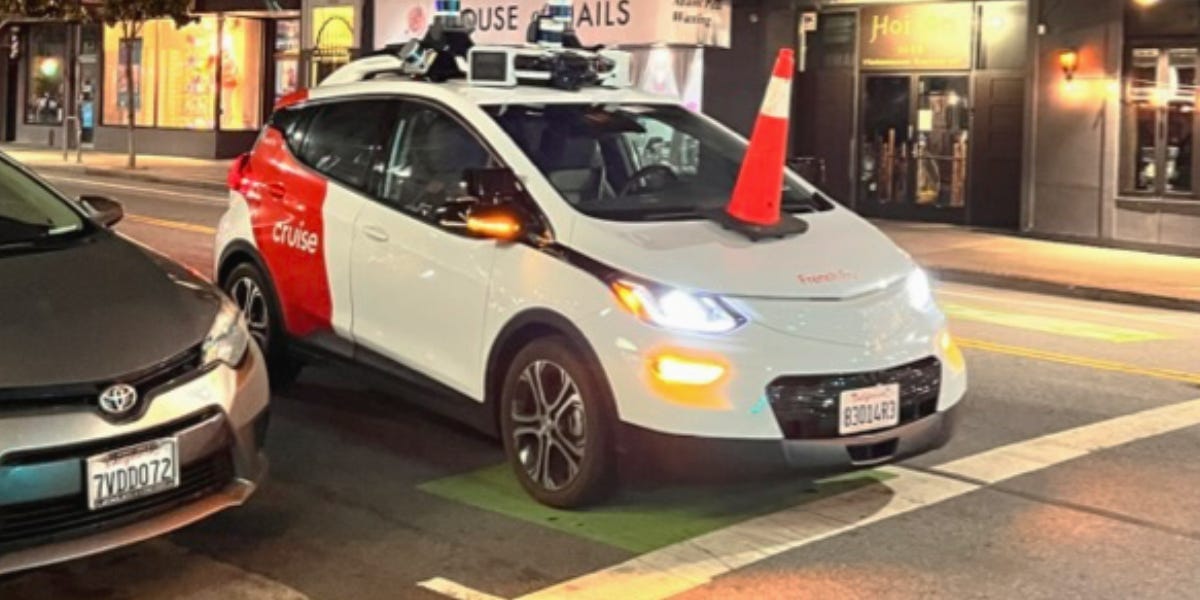
Have you heard of the Week of Cone? A few days ago, a TikTok video released by Safe Street Rebel activists in San Francisco started going viral. It quickly and effectively summarized the false promises of Google’s Waymo and GM’s Cruise as they operate robotaxi services in the city and cause chaos on its streets. Last month a Waymo vehicle even killed a dog.
Years after the industry first promised self-driving cars were supposed to arrive, some boosters point to the trials happening in San Francisco as proof we’re finally on the cusp of the driverless revolution. But there’s plenty of reason to believe companies are once again overpromising on what they can deliver. The robotaxis are constantly blocking transit and emergency vehicles, and have become a new form of ubiquitous surveillance to aid the police department.
In the viral video, Safe Street Rebel advises opponents of the autonomous vehicles (AVs) to start placing the city’s many orange traffic cones on their hoods to disable them. It’s a protest, but it’s also a way to draw attention to an important decision by the state regulator on whether to significantly expand robotaxi services that was due to be made on July 13, but has now been delayed until August 10. The activist group says the delay is “a sign that our campaign is working.”
To understand more about what’s happening in San Francisco, I spoke with an anonymous activist from Safe Street Rebel. The original video has been removed from TikTok, but you can watch it on Instagram or Twitter.
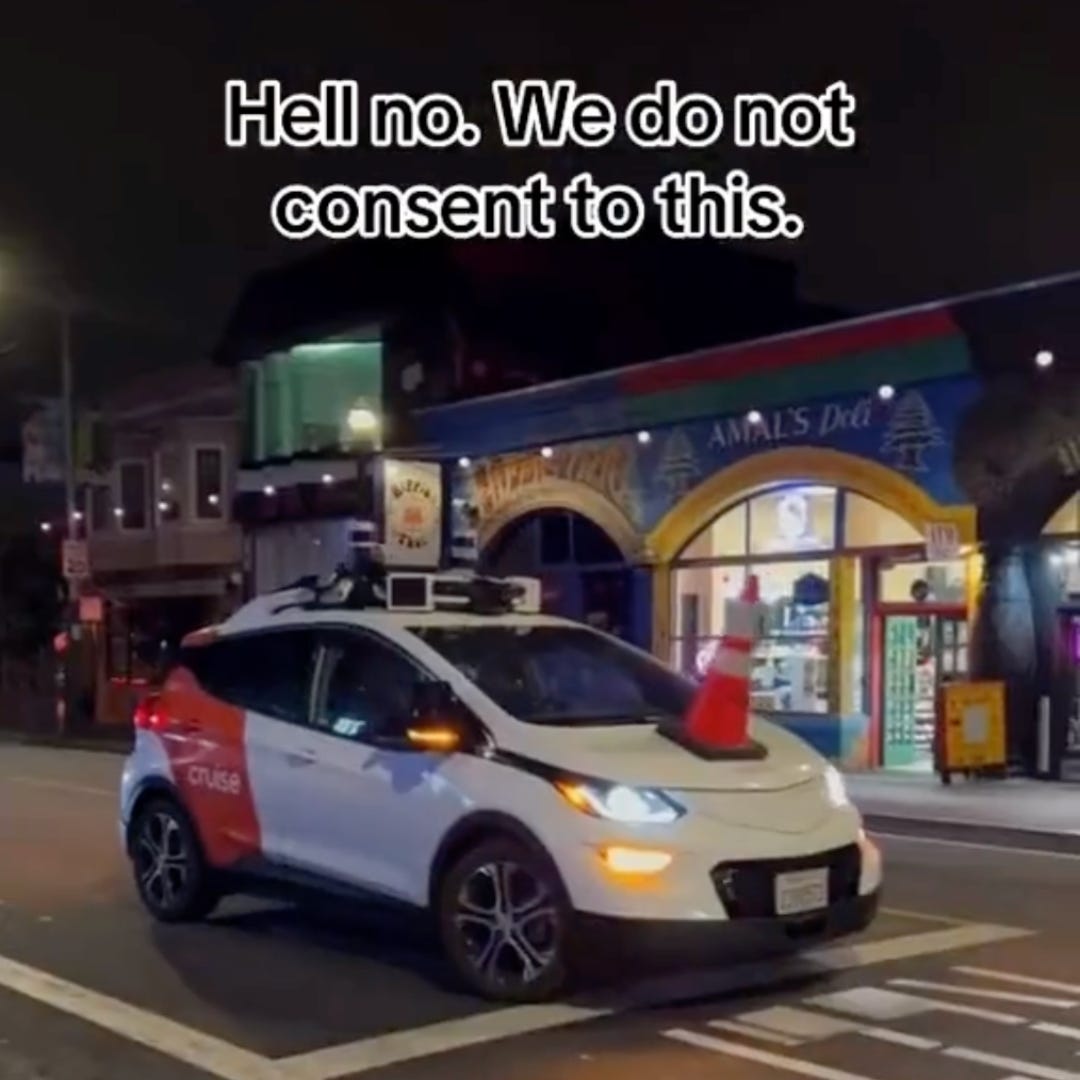
Interview edited for length and clarity.
How did you figure out that traffic cones could disable driverless cars?
A couple of us were at Critical Mass and we saw a cone on one of the cars and saw that it had disabled the car. We’d been looking to do something like an AV-focused direct action for a while, and we saw that and it clicked then that the cones would be perfect. They’re really accessible objects to anyone anywhere in the city, and it’s a very visually striking protest.
It’s really caught a lot of people’s attention! Zooming out, what impacts have these driverless vehicles from Waymo and Cruise had on transportation and on the city itself?
Both Cruise and Waymo only have a couple hundred cars in their fleets, but we’ve seen outsized impacts from them. One of our local media outlets reported in June that year to date, they’ve blocked first responders 66 times. San Francisco’s not that big of a city, so that’s a lot. I think everyone involved has had a negative experience with them, either as a pedestrian or a bus rider or a cyclist. They block buses basically every night because they frequently just fail. They turn on their hazard lights, and they sit there until a technician comes out. They’ve just been wreaking mayhem on the city.
I feel like the general narrative for people outside of San Francisco is like, the self-driving car might finally arrive thanks to Waymo and Cruise. But unless you really dig into it, and unless there are actions like what Safe Street Rebel is doing, then many people beyond San Francisco don’t know that story is not entirely accurate. It’s not playing out as the companies want us to believe. So why call for a Week of Cone now?
Up until Monday afternoon, the California Public Utilities Commission (CPUC), which is a statewide body that regulates this sort of thing, was set to vote to greenlight further expansion of driverless cars in the city. It would basically allow them to have unlimited fleet size and run passenger service all hours of the day instead of just at night. Week of Cone was planned to be a big protest leading up to that to showcase some of the problems with the vehicles and spread awareness about the hearing.
CPUC is not a very transparent body. The commissioners are not democratically elected. It’s statewide and it gets to control what goes on in cities. It’s a very California, like, weirdness of powers thing, so we wanted to try to draw awareness because most people didn’t even know this was happening.
I feel like that was an issue with Uber too where there was some regulation on the state level that interfered with what the city could do. What have you noticed in the political response? Has there been pushback or acceptance?
Something that is pretty prevalent within San Francisco is a resistance to tech, and I think that really doesn’t get reported on outside of the city. A lot of people in the United States and around the world think we’re all super into this stuff. But the truth is most San Francisco residents are actually really unhappy with AVs, and most people don’t like them.
Even on the local political level, which tends to be a lot more friendly to tech than the average person, both our fire and police chiefs are on the record opposing AVs because they get in the way so much. The San Francisco Municipal Transportation Agency handles our streets and our transit, and it has opposed them. It’s really interesting. This issue is split along a new line, but basically everywhere locally, there’s opposition.
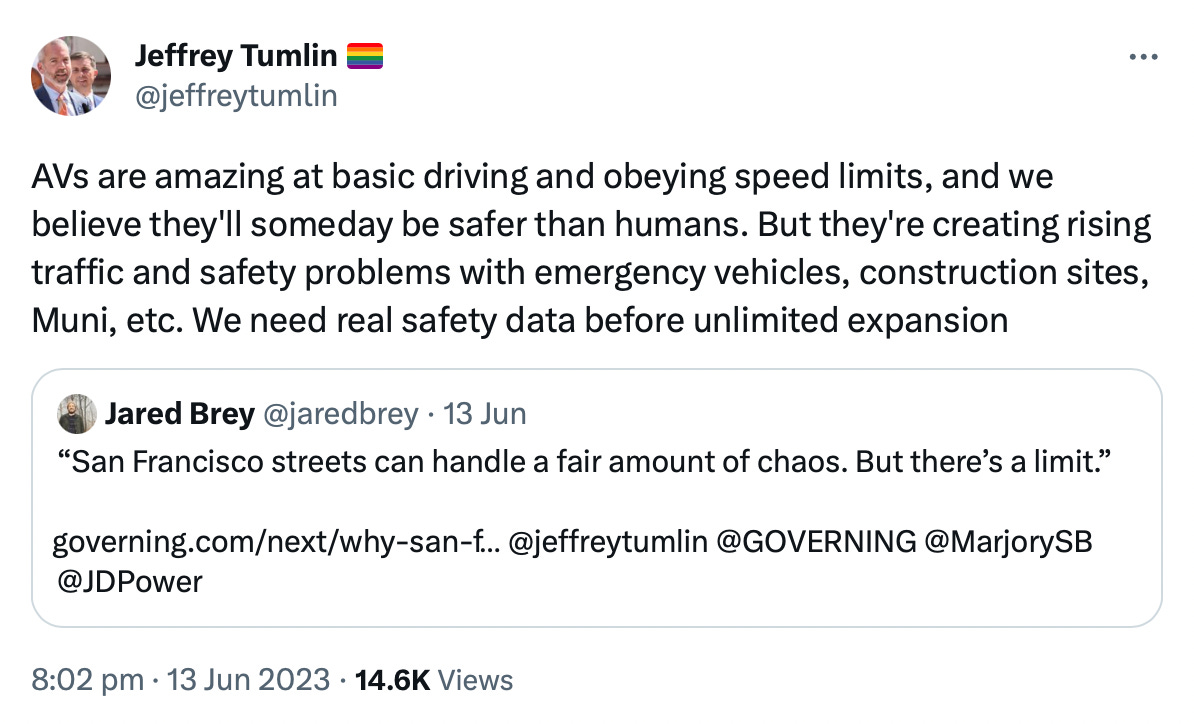
You’re talking about the political response, but you released a video that has gone viral and got a lot of people’s attention. What do you make of the response there’s been to that video and the protests you’re doing over the driverless cars in San Francisco?
I think it went viral for a couple reasons. One, it’s just a really striking visual. But also, a little more seriously, I think a lot of people are fed up with our cities and our governments really bowing to tech like this. They’re consenting to people being experimented on without the people actually wanting it. In that TikTok, we make it clear that this is partially about the fact that we as a city did not consent to this, and we don’t want this. And whether or not your city has AVs, I think a lot of people are sick of their cities bending over backwards for tech.
I think that’s a feeling a lot of people can relate to. You’ve mentioned the impact of the tech industry on San Francisco a number of times. If we’re thinking beyond driverless cars, what has the tech industry done to San Francisco?
San Francisco is a weird city, and tech is not the first thing to really exert power over it. San Francisco was intended to be the new imperial hub of the United States. It was going to be the gateway to the Pacific. In many ways, that did happen, but in many it didn’t. So San Francisco has always been a new place for capital to put itself, but I think tech has really supercharged that.
Being the tech city and the city where tech gets to experiment and try its new things has ended with a lot of consequences. Cost of living here is among the highest in the world now. We have huge homelessness and massive inequality. We have insane amounts of money in local politics for a city with less than a million people. But we’re also one of the most surveilled cities in the United States.
Tech has crept its way into every level of government here too. We have this brain disease where we think we’re so special because we have tech, and that motivates us to do things like spend $10,000 on a trashcan, or spend a million dollars on a public bathroom because it’s some high-tech thing. Not everything needs to be tech, and that creeping tech expansion has actually had a lot of consequences. People are pretty fed up with it.
Powerful people in tech industry love to focus on the problems with San Francisco and blame lefty politicians, but can never seem to take any responsibility for what they’ve done and how they’ve sapped so much wealth from the city, while giving back so little.
Oh, totally. The “socialist San Francisco is destroying itself” narrative is so funny, because on our Board of Supervisors, there’s one democratic socialist and everyone else is to the right of him.
You’ve kicked off this campaign against driverless cars and you’re trying to bring attention to the big decision coming from CPUC, but what would you like to see San Francisco do to improve transportation?
Like all cities in North America, at least in the US and Canada, San Francisco is a city that devotes a disproportionate amount of space and money and time to cars, but especially here where I believe only 53% of households even have a car.
Safe Street Rebel is primarily a group focused on traffic safety and on transit, and the reason we were really protesting AVs is because we see them as an existential threat to our climate goals, to our transit mode share goals, and to our Vision Zero goals to have zero pedestrian fatalities. We like to say that all cars are bad, and that does not differentiate between who or what is driving them.
We want to see more pedestrianization of streets. We want to see more protected bike lanes. We want to see more slow streets. We want to see much more investment in transit. We want to see more transit lines. We want to see free transit. If the roads are free, transit should be too. And we just want to see less cars.
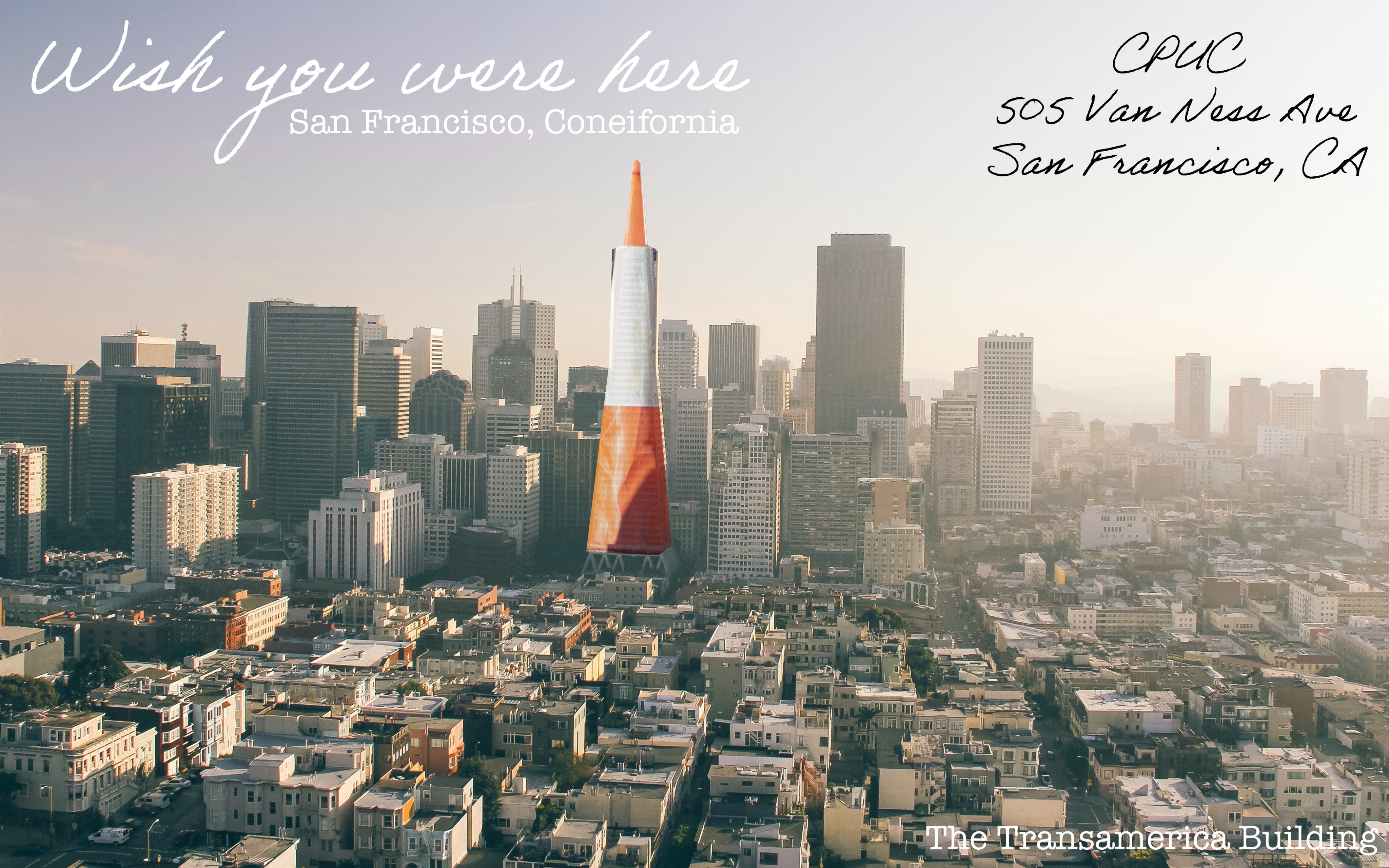
There’s so much opportunity for that in San Francisco as well. Any final points you wanted to leave Disconnect readers with?
The reason a lot of us initially were and are skeptical of these things is that we see this process as gearing up to be a repeat of what happened with Uber and Lyft about a decade ago, where they they made all these promises of reducing vehicle miles traveled, reducing emissions, and reducing car ownership. We could reduce parking, they promised, and we could reduce congestion. Those promises are what regulators really made their decisions based off, and we now know all of those claims were untrue. None of those things have happened. In fact, in most cases the reverse has happened.
A San Francisco County Transportation Authority report from 2020 found that the majority of new congestion in the city was caused by Uber and Lyft, that they didn’t decrease car ownership, and actually increased emissions and vehicle miles traveled. We see a lot of these same promises being made by Cruise and Waymo and proponents of self-driving cars. And we see CPUC really just eating up those promises and believing them without seeing proof. We don’t want to repeat history.
To stay up to date with Safe Street Rebel’s actions, find out how to connect with them on their website.


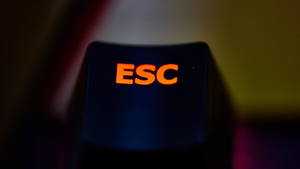

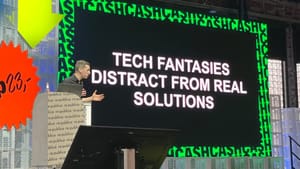

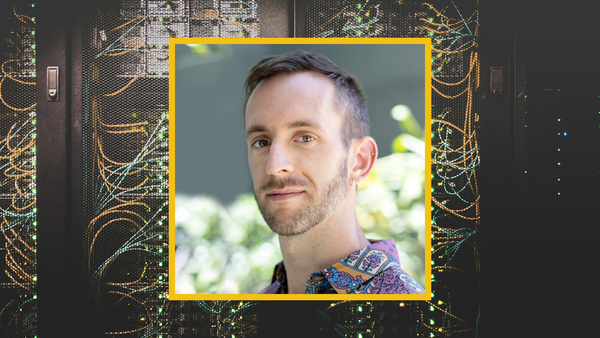

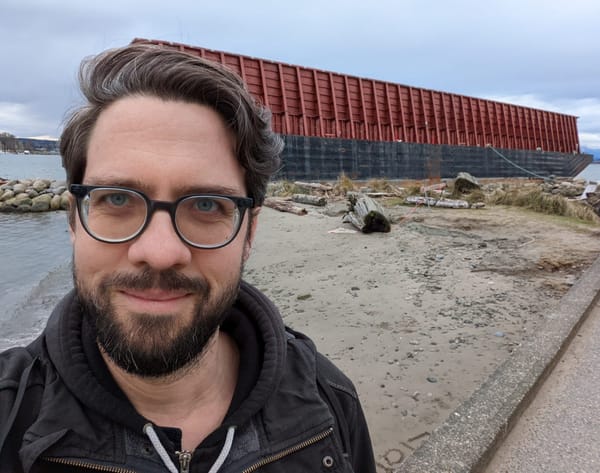

Member discussion